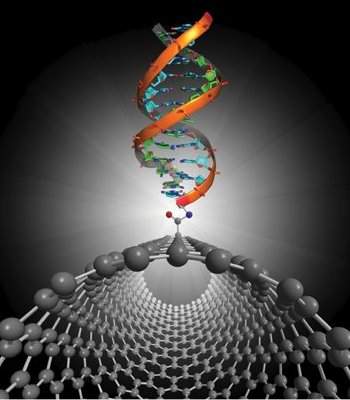 |
The only electronic component not directly detected the connection, but also amplified the charge of individual biomolecules. [Photo: Columbia University] |
Electronics and biology
Joining electronics and biology is, perhaps more than an old dream, a promising possibility.
Of neural sensors and the construction of prostheses controlled by thought, even dreams of fancy radical transhumanist, have long talks in humans enhanced by technology.
And it was enough that the transistors reach an adequate level of miniaturization, with dimensions comparable to a few cells, so scientists began to make direct connection between biological and electronic, with a level of control only imagined - but it had not been done until now.
Transistor detects DNA
An interdisciplinary group of Columbia University, USA, used electronics nanotransistores common - similar to those used in computer processors - to directly detect the interactions between molecules, which occur at such high speeds it is virtually impossible to follow them directly.
The nanotransistores were used to uncover links between the two halves of each strand of DNA to another DNA molecule, attached to nanotransístor.
The only electronic component not directly detected the connection, but also amplified the charge of individual biomolecules.
Until now, to observe the interactions at the level of individual molecules, scientists have used fluorescence techniques - that's what the studies have been made of folding, assembly, dynamics and function of proteins, for example.
But these techniques require that the target molecules are labeled with fluorescent dyes, and the bandwidths for the detection of information is limited by the time needed to collect the small number of photons emitted by the dyes.
Nanotube transistor
The nanotransistores used were made with carbon nanotubes .
Although still emerging field of electronic applications, these nanotubes are extremely sensitive because the biomolecule can be anchored directly to them - the connection of a single DNA molecule is detected by reading the current that travels between the electrodes of the transistor.
Scientists say the new technique will allow the study of interactions between biological molecules on time scales several orders of magnitude smaller than is possible with techniques based on fluorescence
No comments:
Post a Comment